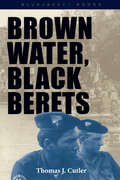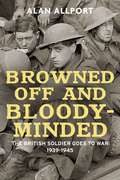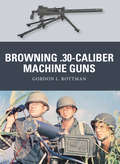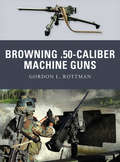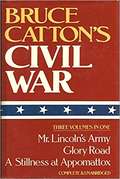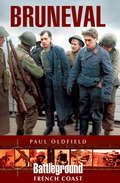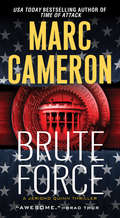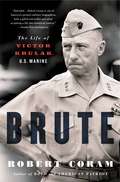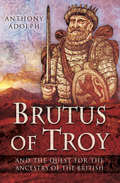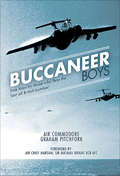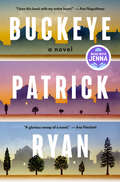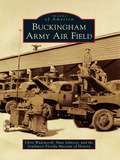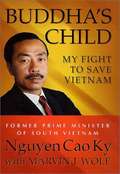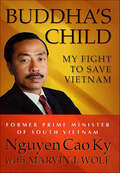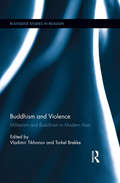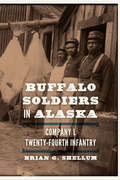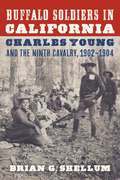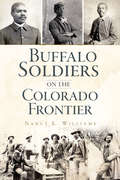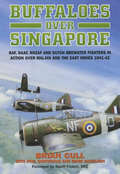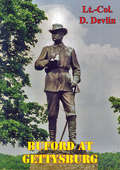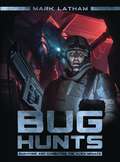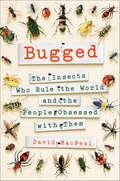- Table View
- List View
Brown Water, Black Berets
by Thomas J. CutlerThe men of the U.S. Navy's brown-water force played a vital but often overlooked role in the Vietnam War. Known for their black berets and limitless courage, they maneuvered their aging, makeshift craft along shallow coastal waters and twisting inland waterways to search out the enemy. In this moving tribute to their contributions and sacrifices, Tom Cutler records their dramatic story as only a participant could. His own Vietnam experience enables him to add a striking human dimension to the account. The terror of firefights along the jungle-lined rivers, the rigors of camp life, and the sudden perils of guerrilla warfare are conveyed with authenticity. At the same time, the author's training as a historian allows him to objectively describe the scope of the navy's operations and evaluate their effectiveness.Winner of the Navy League's Alfred Thayer Mahan Award for Literary Achievement in 1988 when the book was first published, Cutler is credited with having written the definitive history of the brown-water sailors, an effort that has helped readers better understand the nature of U.S. involvement in the war.
Browned Off and Bloody-Minded
by Alan AllportMore than three-and-a-half million men served in the British Army during the Second World War, the vast majority of them civilians who had never expected to become soldiers and had little idea what military life, with all its strange rituals, discomforts, and dangers, was going to be like. Alan Allport's rich and luminous social history examines the experience of the greatest and most terrible war in history from the perspective of these ordinary, extraordinary men, who were plucked from their peacetime families and workplaces and sent to fight for King and Country. Allport chronicles the huge diversity of their wartime trajectories, tracing how soldiers responded to and were shaped by their years with the British Army, and how that army, however reluctantly, had to accommodate itself to them. Touching on issues of class, sex, crime, trauma, and national identity, through a colorful multitude of fresh individual perspectives, the book provides an enlightening, deeply moving perspective on how a generation of very modern-minded young men responded to the challenges of a brutal and disorienting conflict.
Browning .30-caliber Machine Guns
by Gordon Rottman Johnny ShumateBrowning .30-caliber machine guns saw US Army, Navy, Marine, and Air Force service in World War I & II, Korea, and Vietnam, and are still occasionally found in use elsewhere even today. Produced in both water-cooled and air-cooled versions, it has been employed in every imaginable role for a machine gun - antipersonnel, antiaircraft, mounted on aircraft as both defensive and offensive armament, defensive armament aboard vehicles (armored and soft-skin), mounted on watercraft, and others.The .30-caliber story began in World War I, as legendary US weapon-designer John M. Browning strove to develop a belt-fed, water-cooled heavy machine gun to provide infantry support. Significantly lighter than the British Vickers and the German MG 08, the hard-wearing Browning M1917 was among the best in its class; as the M1917A1 it served through World War II and the Korean War, and was only retired in the late 1950s as evolving infantry tactics demanded lighter, more mobile support weapons.Initially developed as a tank machine gun in World War I, the M1919 air-cooled version saw lengthy service with the US Army, Navy, Marine Corps and Air Force - as well as the armed forces of other nations - in an enormous variety of roles and environments. World War I had demonstrated that infantry-support machine guns had to be light enough to be hand-carried over rough terrain; the M1919's air-cooled operation made this possible. The commonest version, the M1919A4, was widely employed throughout World War II, Korea, and beyond, while M1919 variants were used as the secondary armament for all US tanks in World War II and on some types of US aircraft and watercraft well into the 1960s. The 'thirty' set such a high standard in reliability that it became the benchmark against which all subsequent weapons have been judged.Employing gripping first-hand testimony and featuring specially commissioned illustrations and detailed photographs, many in color, this lively study of the Browning .30-caliber machine gun reveals the origins, combat history and legacy of this versatile and dependable weapon.
Browning .50-Calibre Machine Guns
by Gordon L. RottmanOsprey’s new Weapon series provides a highly-detailed yet affordable overview of the development, use, and impact of small arms throughout history—from the sword to the machine gun. In this volume, Gordon Rottman examines this history of the longest serving weapon in the U.S. military’s small arms inventory. Thoroughly researched and illustrated with rare photographs and original artwork by Johnny Shumate, the book takes readers from the origins of the “fifty” on the battlefields of WWI to its use in the war on terror today. Rottman provides lists of the companies that manufactured the Browning and analyzes the variants that have arisen over the years since it first entered service in 1933. He also provides descriptions and photos of how it was used on aircraft, ships, riverboats, tanks, Humvees, and by ground forces. A cutaway illustration from Alan Gilliland details the parts of the weapon and a final chapter dispels myths told about it.
Bruce Catton's Civil War: Mr Lincoln's Army, Glory Road, A Stillness at Appomattox
by Bruce CattonInfinitely readable and absorbing, Bruce Catton's "The Civil War" is one of the best-selling, most widely read general histories of the war, now available in a single ominbus volume. The Civil War vividly traces one of the most moving chapters in American history, from the early division between the North and the South to the final surrender of Confederate troops. Catton's account of battles is carefully interwoven with details about the political activities of the Union and Confederate armies and diplomatic efforts overseas.<P><P> Winner of the Pulitzer Prize<P> Winner of the National Book Award
Bruneval
by Paul OldfieldThe Bruneval Raid, launched against a German radar installation on the French coast in February 1942, was unique: it was one of the first fully combined operations put together by HQ Combined Operations under Mountbatten; for the first time a unit of the newly formed British Parachute Regiment went into action; it was the only raid carried out purely to satisfy the needs of scientific intelligence. It was highly successful and the results achieved were out of all proportion to the resources committed.This book covers the development of radar, the search for German radar in the Second World War, the discovery of Wrzburg radar at Bruneval, the planning and preparations for the audacious raid, its highly successful execution and the aftermath. There is a wealth of colorful characters involved, from world-class scientists, outstanding reconnaissance pilots, Resistance agents, famous sailors, soldiers and airmen, an escaped German Jew and, most importantly, a vast number of ordinary people involved doing extraordinary things to win the war against Hitler's Germany.
Brutality in an Age of Human Rights: Activism and Counterinsurgency at the End of the British Empire
by Brian DrohanIn Brutality in an Age of Human Rights, Brian Drohan demonstrates that British officials’ choices concerning counterinsurgency methods have long been deeply influenced or even redirected by the work of human rights activists. To reveal how that influence was manifested by military policies and practices, Drohan examines three British counterinsurgency campaigns—Cyprus (1955–1959), Aden (1963–1967), and the peak of the "Troubles" in Northern Ireland (1969–1976). This book is enriched by Drohan’s use of a newly available collection of 1.2 million colonial-era files, International Committee of the Red Cross files, the extensive Troubles collection at Linen Hall Library in Belfast, and many other sources.Drohan argues that when faced with human rights activism, British officials sought to evade, discredit, and deflect public criticism of their actions to avoid drawing attention to brutal counterinsurgency practices such as the use of torture during interrogation. Some of the topics discussed in the book, such as the use of violence against civilians, the desire to uphold human rights values while simultaneously employing brutal methods, and the dynamic of wars waged in the glare of the media, are of critical interest to scholars, lawyers, and government officials dealing with the conflicts in Iraq and Afghanistan, and those to come in the future.
Brute Force (A Jericho Quinn Thriller #6)
by Marc CameronAre these the last days of America? A thriller starring &“a compelling, never-give-an-inch hero who will appeal to Jack Reacher fans&” (Booklist). In the aftermath of a devastating biological attack, America stands on the brink of disaster. The President of the United States is controlled by terrorists. The Vice President, global mastermind Lee McKeon, is plotting his next move. And special agent Jericho Quinn is running for his life. Desperate to clear his name—and expose the conspirators in the White House—Quinn must race against time before McKeon can execute his evil plan. It begins with heightened security, mass surveillance, and the establishment of a brutal police state. It can only end in the takeover of America. The only thing standing between democracy and destruction is a man named Quinn…and one perfectly aimed bullet. From the New York Times-bestselling author of Tom Clancy Oath of Office, this heart-pounding thriller features &“a formidable warrior readers will want to see more of&” (Publishers Weekly).
Brute: The Life of Victor Krulak, U.S. Marine
by Robert CoramFrom the earliest days of his thirty-four-year military career, Victor "Brute" Krulak displayed a remarkable facility for applying creative ways of fighting to the Marine Corps. He went on daring spy missions, was badly wounded, pioneered the use of amphibious vehicles, and masterminded the invasion of Okinawa. In Korea, he was a combat hero and invented the use of helicopters in warfare. In Vietnam, he developed a holistic strategy in stark contrast to the Army's "Search and Destroy" methods-but when he stood up to LBJ to protest, he was punished. And yet it can be argued that all of his these accomplishments pale in comparison to what he did after World War II and again after Korea: Krulak almost single-handedly stopped the U.S. government from abolishing the Marine Corps.
Brutus of Troy: And the Quest for the Ancestry of the British
by Anthony AdolphA &“fascinating [and] unique exploration&” of the mythological founder of Britain, divine ancestor of King Arthur, and symbol of British identity (Your Family History). Believed to be a great-great-great grandson of the Greek goddess Aphrodite, Brutus of Troy led a voyage from Greece to Britain. Landing at Totnes in Devon, it is said that Brutus overthrew the giants who lived there, laid the foundations of Oxford University and London, and sired a line of kings that includes King Arthur and the ancestors of the present Royal Family. Genealogist Anthony Adolph traces the legend of Brutus of Troy from the Roman times onwards, looking at his popularity, his mentions in fiction, and his place in mythology of some of London&’s landmarks. Brutus&’ story played a crucial role in royal propaganda and foreign policy. His tale also inspired poets and playwrights including Shakespeare, Spenser, Milton, Pope, Wordworth, Dickens, and Blake. Brutus of Troy delves into how the myth shaped Britain&’s identity and gave the nation a place in Classical mythologies and the Bible.
Brutus: Caesar's Assassin
by Dr. Kirsty CorriganThe extraordinary life of the &“noblest Roman of them all.&” Although Marcus Junius Brutus is one of the most famous, or infamous, conspirators of Rome and the ancient world, if not of all time, knowledge of this historical figure has principally been passed to the modern world through the literary medium of Shakespeare&’s tragedy, Julius Caesar. Furthermore, any interest in Brutus has tended to focus only on events surrounding his most legendary act: Caesar&’s murder. This biography instead considers Brutus in his historical context, gathering details from ancient evidence and piecing together, as much as possible, his whole life. While his actions played a pivotal role in Roman history, ultimately, although completely unintentionally, bringing about the downfall of the Roman republic, Brutus has often been neglected. Indeed, he has rarely been considered on his own merits, instead featuring as part of the biographies and studies of other leading political figures of the time, especially those of Julius Caesar, Cicero, and Octavian. As the first dedicated biography in over thirty years, this full and balanced reconsideration of this significant Roman republican is long overdue.
Buccaneer Boys: True Tales by Those who Flew the 'Last All-British Bomber'
by Graham PitchforkThe historian and author of The Sowreys details the history of the British fighter plane and what life was like for its crews flying missions around the world. Twenty-four aircrew who flew the iconic aircraft with the Fleet Air Arm, the Royal Air Force, and the South African Air Force (SAAF) relate their experiences and affection for the Blackburn Buccaneer. Buccaneer Boys traces the history of the aircraft and the tasks it fulfilled. It also explores the lifestyle of a Buccaneer squadron and the lighthearted side of being a &“Buccaneer Boy,&” in addition to their professionalism and dedication. Author Graham Pitchfork examines the introduction into service, followed by the air force&’s maritime tactics and the deployment of two squadrons to Germany in the overland strike role. He details the aircraft&’s stunning successes at the Red Flag and Maple Flag exercises flown in North America, which took the USAF hierarchy by storm, and devotes attention to the intensive but little-known Bush War operations by 24 SAAF Squadron on the borders of Angola. Two USAF exchange officers who flew Buccaneers share their experiences. The author then looks at the aircraft&’s deployment for the Lebanon crisis and the reinforcement exercise to the Falkland Islands. He covers the introduction of new air-to-surface anti-ship missiles right before the Buccaneer left to go to war in the Gulf War where it distinguished itself providing precision laser marking for the Tornado force, in addition to carrying out its own precision bombing attacks. This lavishly illustrated book concludes with accounts of the aircraft&’s final days in RAF service and some reflections on its impact on maritime and overland air power.
Buckeye: A Novel
by Patrick RyanREAD WITH JENNA BOOK CLUB PICK AS FEATURED ON TODAY • &“A small-town novel of epic proportions&” (Tom Perrotta), this captivating story weaves the intimate lives of two midwestern families across generations, from World War II to the late twentieth century.&“I love this book with my entire heart.&”—Ann Napolitano, New York Times bestselling author of Hello BeautifulOne town. Two families. A secret that changes everything.In Bonhomie, Ohio, a stolen moment of passion, sparked in the exuberant aftermath of the Allied victory in Europe, binds Cal Jenkins, a man wounded not in war but by his inability to serve in it, to Margaret Salt, a woman trying to obscure her past. Cal&’s wife, Becky, has a spiritual gift: She is a seer who can conjure the dead, helping families connect with those they&’ve lost. Margaret&’s husband, Felix, is serving on a Navy cargo ship, out of harm&’s way—until a telegram suggests that the unthinkable might have happened.Later, as the country reconstructs in the postwar boom, a secret grows in Bonhomie—but nothing stays buried forever in a small town. Against the backdrop of some of the most transformative decades in modern America, the consequences of that long-ago encounter ripple through the next generation of both families, compelling them to reexamine who they thought they were and what the future might hold.Sweeping yet intimate, rich with piercing observation and the warmth that comes from profound understanding of the human spirit, Buckeye captures the universal longing for love and for goodness.
Buckingham Army Air Field (Images of America)
by Chris Wadsworth Matt Johnson Southwest Florida Museum of HistoryFor most people in Southwest Florida, the name Buckingham is just one more dot on a map--a rural area east of U.S. Interstate 75. But for a few years, it was so much more. Starting in 1942, it was the site of the Buckingham Army Air Field--home to some 16,000 men and women supporting the United States' World War II efforts. Airplanes roared in the skies over Lee County and reflected off the azure waters of the Gulf of Mexico as tens of thousands of young men trained as aerial gunners. Learning to target and bring down enemy aircraft with their guns was critical to America's success in both the European and Pacific theaters. On the ground, trucks rumbled across the mammoth base, soldiers marched in review under the hot Florida sun, and an entire town sprang up on what was once swampland. Barracks were built, along with stores, nightclubs, churches, and even a hospital with its own baby ward. Today the memories of Buckingham Army Air Field can be found hiding in plain sight, including a working airport that was once the heart of the base.
Buddha's Child: My Fight to Save Vietnam
by Nguyen Cao Ky Marvin J. WolfThe former prime minister of South Vietnam recalls the pivotal events, major personalities, and previously unknown aspects of Vietnam's two-decade debacle.
Buddha's Child: My Fight to Save Vietnam
by Nguyen Cao Ky Marvin J. WolfThe history of the Vietnam War has rarely been told from the Vietnamese perspective-and never by a leader of that country. In Buddha's Child, Nguyen Cao Ky reveals the remarkable story of his tumultuous tenure as Premier of South Vietnam, and offers unprecedented insight into the war's beginning, escalation, and heartbreaking end.A thirty-four year old pilot and Air Force commander, known for his fighter-pilot's moustache, flowing lavender scarf and his reputation as a ladies' man, Ky in 1965 agreed to lead South Vietnam after a series of coups had dangerously destabilized the nation. Ky's task was to unite a country riven by political, ethnic, and religious factions and undermined by corruption. With little experience in governing and none in international affairs, and while continuing to fly combat missions over Vietnam, Ky plunged into a war to save his homeland. He served as premier until 1967, continued to be active in the war after his resignation, and finally left Vietnam in 1975 during the fall of Saigon.Buddha's Child offers Ky's perspective on the crucial events and memorable images of the Vietnam War: the coup against and execution of President Diem; the self-immolation by the Buddhist monk, and the radical Buddhists' attempt to topple Ky's government; the bloody and pivotal Tet Offensive; the shooting of a Vietcong prisoner, captured in one of the war's most notorious photographs; the Paris Peace talks that sold out South Vietnam; and the last, desperate days of Saigon. In frank language, Ky discusses his own successes and failures as a leader and dramatically relates the progress of the war as it unfolded on the ground and behind the scenes-including anecdotes about Lyndon Johnson, Richard Nixon, William Westmoreland, Henry Cabot Lodge, William Colby, Henry Kissinger, and many others. Buddha's Child is a revelatory, fascinating account of a nation at war by a most unusual man.
Buddhism and Violence: Militarism and Buddhism in Modern Asia (Routledge Studies in Religion #19)
by Torkel Brekke Vladimir TikhonovIt is generally accepted in the West that Buddhism is a ‘peaceful’ religion. The Western public tends to assume that the doctrinal rejection of violence in Buddhism would make Buddhist pacifists, and often expects Buddhist societies or individual Asian Buddhists to conform to the modern Western standards of ‘peaceful’ behavior. This stereotype – which may well be termed ‘positive Orientalism,’ since it is based on assumption that an ‘Oriental’ religion would be more faithful to its original non-violent teachings than Western Christianity – has been periodically challenged by enthusiastic acquiescence by monastic Buddhism to the most brutal sorts of warfare. This volume demolishes this stereotype, and produces instead a coherent, nuanced account on the modern Buddhist attitudes towards violence and warfare, which take into consideration both doctrinal logic of Buddhism and the socio-political situation in Asian Buddhist societies. The chapters in this book offer a deeper analysis of ‘Buddhist militarism’ and Buddhist attitudes towards violence than previous volumes, grounded in an awareness of Buddhist doctrines and the recent history of nationalism, as well as the role Buddhism plays in constructions of national identity. The international team of contributors includes scholars from Thailand, Japan, and Korea.
Buffalo Soldiers (Black Sabre #1)
by Tom WillardFrom the Civil War to Desert Storm, there stretches an unbroken line of dedicated, distinguished service by African-Americans in the United States military. This tale is about Augustus Sharps who fought for the North in 1866.
Buffalo Soldiers in Alaska: Company L, Twenty-Fourth Infantry
by Brian G. ShellumThe town of Skagway was born in 1897 after its population quintupled in under a year due to the Klondike gold rush. Balanced on the edge of anarchy, the U.S. Army stationed Company L, a unit of Buffalo Soldiers, there near the end of the gold rush. Buffalo Soldiers in Alaska tells the story of these African American soldiers who kept the peace during a volatile period in America&’s resource-rich North. It is a fascinating tale that features white officers and Black soldiers safeguarding U.S. territory, supporting the civil authorities, protecting Native Americans, fighting natural disasters, and serving proudly in America&’s last frontier. Despite the discipline and contributions of soldiers who served honorably, Skagway exhibited the era&’s persistent racism and maintained a clear color line. However, these Black Regulars carried out their complex and sometimes contradictory mission with a combination of professionalism and restraint that earned the grudging respect of the independently minded citizens of Alaska. The company used the popular sport of baseball to connect with the white citizens of Skagway and in the process gained some measure of acceptance. Though the soldiers left little trace in Skagway, a few remained after their enlistments and achieved success and recognition after settling in other parts of Alaska.
Buffalo Soldiers in California: Charles Young and the Ninth Cavalry, 1902–1904
by Brian G. ShellumBrian G. Shellum follows the experiences of Captain Charles Young and the Ninth Cavalry in California, from life at the Presidio of San Francisco to summers patrolling Sequoia and Yosemite National Parks to missions training with the California National Guard.
Buffalo Soldiers on the Colorado Frontier (Military)
by Nancy K. WilliamsThe legendary Buffalo Soldiers, four army regiments of former slaves, were vital in taming the American frontier. The Tenth Cavalry of African American troopers rode across the Colorado plains to battle the Cheyennes and rescue wounded, starving soldiers at Beecher Island on the Arikaree River. Under the cover of darkness, the Ninth Cavalry aided besieged troops pinned down by Ute sharpshooters at Milk Creek. They drove off Cheyenne Dog Soldiers attacking a stagecoach of nervous travelers on the Smokey Hill Trail to Denver. And they braved howling blizzards and deep snowdrifts to protect lonely homesteads and wandering prospectors. Author Nancy K. Williams details the bravery and valor of these historic servicemen who served proudly defending America's Wild West.
Buffaloes over Singapore: RAF, RAAF, RNZAF and Dutch Brester Fighters in Action Over Malaya and the East Indies 1941–1942
by Brian Cull Mark Haselden Paul SortehaugThis WWII history recounts how RAF pilots, outgunned by superior Japanese aircraft, nevertheless flew and fought their way to victory. In 1940, the Royal Air Force Purchasing Commission acquired more than 100 Brewster B-339 Buffalo fighter planes from the US. But when the aircraft were deemed below par for service in the UK, the vast majority were diverted for use in the Far East, where it was believed they would be superior to any Japanese aircraft encountered should hostilities break out there. This assessment was to prove tragically mistaken. When war erupted in the Pacific, the Japanese Air Forces proved vastly superior in nearly all aspects. Compounding their advantage was the fact that many of the Japanese fighter pilots were veterans of the war against China. By contrast, most of the young British, New Zealand, and Australian pilots who flew the Buffalo on operations in Malaya and in Singapore were little more than trainees. Yet these fledgling fighter pilots achieved much greater success than could have been anticipated. Buffaloes Over Singapore tells their story in vivid detail, complete with previously unpublished source material and wartime photographs.
Buford At Gettysburg
by Lt.-Col. D. Devlin US ArmyDuring the Civil War Battle of Gettysburg in July 1863, then Brigadier General John Buford commanded the First Cavalry Division, Cavalry Corps, Army of the Potomac, U.S.A. He is generally credited with determining the importance of, and holding the ground near Gettysburg for the coming battle. This study examines the controversies surrounding Buford's actions and discusses whether the controversies have overshadowed the importance of the lessons to be learned from the events.
Bug Hunts
by Mark LathamThey said there were no monsters. But there are.It is the 23rd Century, mankind has reached out to the stars, populating great swathes of the galaxy in their bid to become the rulers of space. And yet one threat more than any other stands in the way of humanity's manifest destiny: Bugs. Across the cold void of space, alien monsters prey on humanity - infesting generation-ships, destroying colonies, and transforming humans into hosts for their foul spoor. From the insectoid hive-beasts of Klaatu, to the xenomorphic parasites of the outer rim, this book contains the sum total of human knowledge of the myriad forms of alien menace; where to find them... and how to kill them. In this guide you will find details of mankind's greatest champions, the marines of STAR dynamic. With their state-of-the-art technology and advanced combat tactics developed over a century of warfare, the STAR marines battle the alien, wherever it may strike.
Bugged: The Insects Who Rule the World and the People Obsessed with Them
by David MacNeal"Creepy, beautiful, icky and amazing." —Penny Le Couteur, author of Napoleon's ButtonInsects have been shaping our ecological world and plant life for over 400 million years. In fact, our world is essentially run by bugs—there are 1.4 billion for every human on the planet. In Bugged, journalist David MacNeal takes us on an off-beat scientific journey that weaves together history, travel, and culture in order to define our relationship with these mini-monsters. MacNeal introduces a cast of bug-lovers—from a woman facilitating tarantula sex and an exterminator nursing bedbugs (on his own blood), to a kingpin of the black market insect trade and a “maggotologist”—who obsess over the crucial role insects play in our everyday lives. Just like bugs, this book is global in its scope, diversity, and intrigue. Hands-on with pet beetles in Japan, releasing lab-raised mosquitoes in Brazil, beekeeping on a Greek island, or using urine and antlers as means of ancient pest control, MacNeal’s quest appeals to the squeamish and brave alike. Demonstrating insects’ amazingly complex mechanics, he strings together varied interactions we humans have with them, like extermination, epidemics, and biomimicry. And, when the journey comes to an end, MacNeal examines their commercial role in our world in an effort to help us ultimately cherish (and maybe even eat) bugs.
